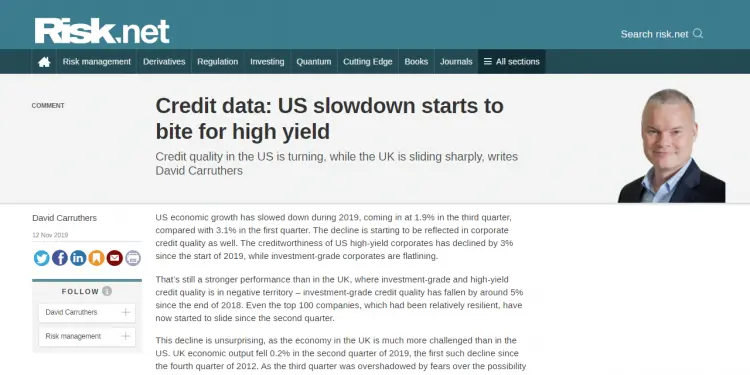US economic growth has slowed down during 2019, coming in at 1.9% in the third quarter, compared with 3.1% in the first quarter. The decline is starting to be reflected in corporate credit quality as well. The creditworthiness of US high-yield corporates has declined by 3% since the start of 2019, while investment-grade corporates are flatlining.
That’s still a stronger performance than in the UK, where investment-grade and high-yield credit quality is in negative territory – investment-grade credit quality has fallen by around 5% since the end of 2018. Even the top 100 companies, which had been relatively resilient, have now started to slide since the second quarter.
In this series of monthly articles from Risk.net, David Carruthers, head of research at Credit Benchmark, examines the relationship between global economic slowdown and credit quality weakness, particularly in US and UK companies.
In the UK, we take a look at the credit trend and distribution of the largest 100 companies, with some ominous signals ahead. Plus, a comparison of US and UK corporates split between those rated IGb (lower segment of investment-grade) and those rated HYb (the upper end of the high-yield category).
An analysis of North American Oil & Gas companies shows some interesting divergence by subsectors. Also on US companies, a value v growth comparison of corporate borrowers split by earnings yield.
Read the full article using the below link:
View original article (external link)
